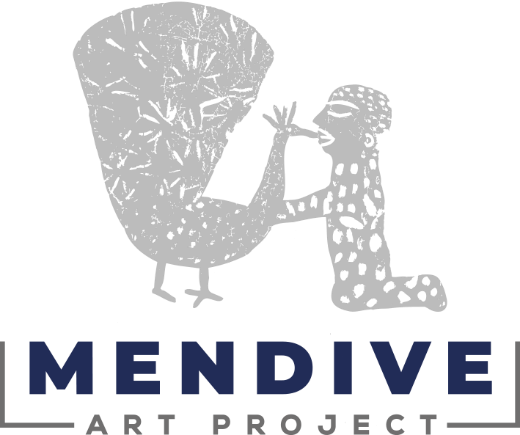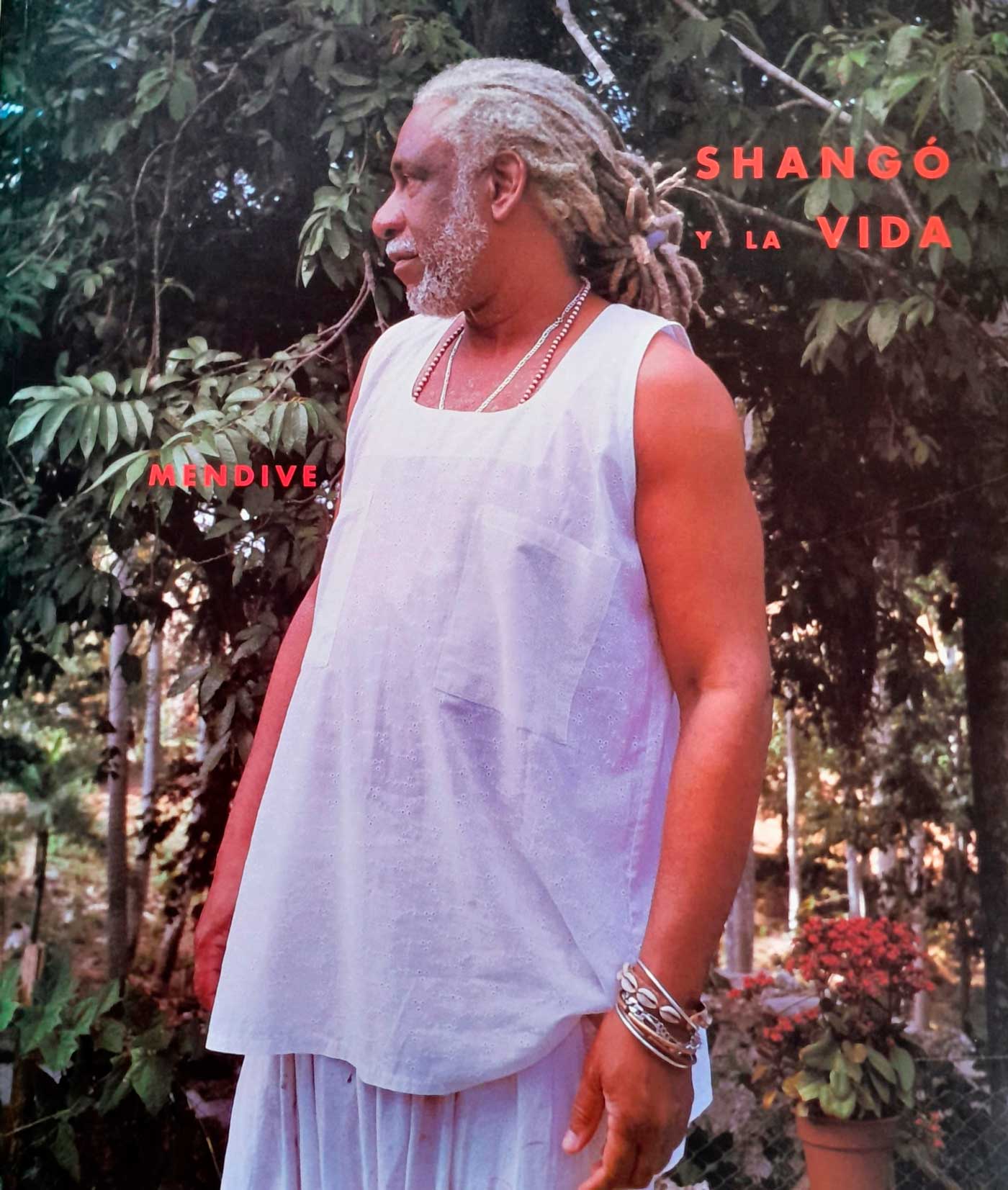Pierre Restany
On the 17 November 2000, after the Bienal Awards granted by UNESCO jury of which I was President, had been published, I went to meet up with up Mendive in his small paradise lost in the tropical countryside and just as every time I meet up with him, I find myself slipping away from and Joan Guaita can give his testimony to this. The Yoruba magic, that comes out of its dark hiding places, is suddenly lit up. He develops his practices within an initial order that will soon become known as a white Macumba.
The ancient Yoruba religions seems to have taken good note of the versatile fate of the Mendivian image and the serene optimism of its new appearance. Peace and serenity are synonymous for monumentality. The Mother Nature, who shelter it in his innermost bowels unravels and straightens out his flowing locks. The Mendivian nature has found the complete chlorophyll of its good health. The whole of Africa is about to turn white in the sunshine of hope. And this hope is a radiant paradox that has emerged like a bud of sugar cane within the heart of the skeleton remains of a devastated Marxist ideology.
Mendive’s works in the 2000s are those of maturity and eclosion of a pantheist and animist imagination that ends up incorporating itself, without shame or complexes, to the informative flow of our global culture as if they had come out of an Internet web page. We follow the artist within the quiet safety caused by the power of his vision. Keeping his initiation in secret is not admissible any longer and the message he now conveys is that of a culture that has made its conclusive rites with itself and presents itself as a reference in its full right. Mendive has not lost his secrets, but he deposits them at the very heart of global communication as sign vectors of the most fundamental information. As it always happens in his iconography, it is all about an intellectual and sensual meditation regarding the being and his relation with the world, with its nature, which is the nature of things, of everything. As his computer is indissolubly associated with its mouse, each being is linked to the symbolic signs of his destiny. Mendive has always been a discoverer regarding signs, and he has become the pioneer of the new planetary civilization. The whole complex web of telematics structures has braided in our brain the transplantation of an intelligent and generous machine in our brain, either by destiny (or by calculation). Mendive has understood that successive generations will not need to carry out the huge mental effort of memorizing the basic data on which we founded, still today, the references of our identity and sensitivity. Our successors will find these references stored in Internet, the planetary memory of humankind. What will the man of tomorrow do in the presence of this huge amount of released mental energy? Expectations are that that it will be transferred into sensorial energy and that we will find again the direct use of our senses that are completely drugged by the abuse of power of mental activity: taste, smell and touch, that were the patrimony and exclusive heritage of Mendive’s remote ancestors and of those initiated in the African, Asian, Indian and Oceanic pantheism… When human consciousness faces such premonition of fundamental revision, it intuitively projects over this transitory situation the Apocalypses metaphors, with its fundamental dualism: horror, violence, the Beast; beauty, peace, the heavenly Jerusalem.
As an inspired observer, Mendive has managed to assume intuitively the ancestral path. The exhibited samples of his sinister and sticky phantasmagoria have found the oxygen of heavenly paradise. His work has improved not only in energy and specific gravity, but also in immediate current time.
Mendive’s images are serene because his author knows very well that he has already found his place in the current time of tomorrow.
Pierre Restany
Text for the catalog of the exhibition: ¨Los ancestros, orisha, la naturaleza y el pensamiento¨, San Juan, Puerto Rico, Museo de las Américas, November, 2003-January, 2004.

